
Global Support for Professionals
For sports photography, choose continuous-servo AF (AF-C). Focus is adjusted continuously while the shutter-release button is pressed halfway or the AF-ON button is pressed. If the subject is in motion, the camera will engage predictive focus tracking to predict the final distance to the subject and adjust focus as necessary.

To select continuous-servo AF, press the AF-mode button and rotate the main command dial until AF-C is displayed in the viewfinder and top control panel.
Choose an AF-area mode according to your subject.
| Single-point AF | |
|---|---|
| Top control panel |  |
| View-finder |  |
| Focus-point display *: Selection | 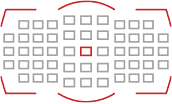 |
| Focus-point display *: Shooting | 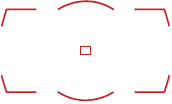 |
The focus point is selected manually. The camera focuses on the subject in the selected focus point only. Choose for subjects you can keep framed in the selected focus point.
| 9-point dynamic-area AF | |
|---|---|
| Top control panel |  |
| View-finder |  |
| Focus-point display *: Selection | 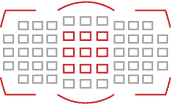 |
| Focus-point display *: Shooting | 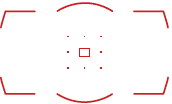 |
| 21-point dynamic-area AF | |
| Top control panel |  |
| View-finder |  |
| Focus-point display *: Selection |  |
| Focus-point display *: Shooting | 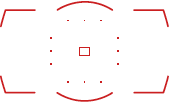 |
| 51-point dynamic-area AF | |
| Top control panel |  |
| View-finder |  |
| Focus-point display *: Selection |  |
| Focus-point display *: Shooting | 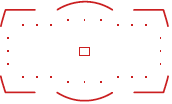 |
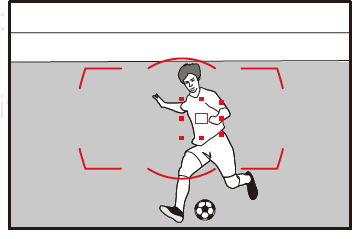 The focus point is selected manually. The camera focuses on the subject in the selected focus point when autofocus is initiated, but if the subject later leaves the selected point for brief periods, the camera will focus based on information from surrounding points. Choose for low-contrast subjects if the camera has difficulty focusing or for active subjects that are hard to keep framed in a single point, and increase the number of points if the subject is moving unpredictably or occupies a large area of the frame. Choose a setting one level higher for subjects at the edge of the frame.
The focus point is selected manually. The camera focuses on the subject in the selected focus point when autofocus is initiated, but if the subject later leaves the selected point for brief periods, the camera will focus based on information from surrounding points. Choose for low-contrast subjects if the camera has difficulty focusing or for active subjects that are hard to keep framed in a single point, and increase the number of points if the subject is moving unpredictably or occupies a large area of the frame. Choose a setting one level higher for subjects at the edge of the frame.
| 3D-tracking | |
|---|---|
| Top control panel |  |
| View-finder |  |
| Focus-point display *: Selection |  |
| Focus-point display *: Shooting | 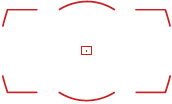 |
The initial focus point is selected manually. The camera uses color information to track subjects that leave the selected focus point and selects new focus points as required.
| Group-area AF | |
|---|---|
| Top control panel |  |
| View-finder |  |
| Focus-point display *: Selection |  |
| Focus-point display *: Shooting | 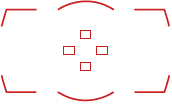 |

The camera focuses using all the focus points in a group of 5 selected by the user, reducing the risk of the camera focusing on the background. Choose for subjects that are difficult to photograph using a single focus point.
| Auto-area AF | |
|---|---|
| Top control panel |  |
| View-finder |  |
| Focus-point display *: Selection |  |
| Focus-point display *: Shooting |  |
The camera automatically detects the subject and selects the focus point.
* On selected for Custom Setting a5 (Focus point illumination) > Dynamic-area AF display.
To choose the AF-area mode, press the AF-mode button and rotate the sub-command dial until the desired option is displayed in the viewfinder and top control panel.

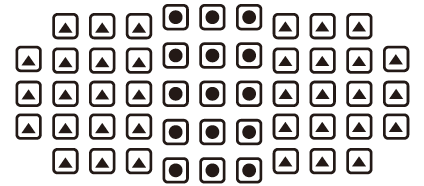 |
Maximum aperture f/5.6 or faster Focus point selection is supported with all 51 points: 15 cross-type sensors () at the center of the display and 18 line sensors () on either side. |
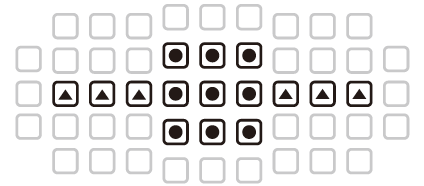 |
Maximum aperture slower than f/5.6 but faster than f/8 Focus point selection is supported with 15 points: 9 cross-type sensors at the center of the display and 3 line sensors on either side. |
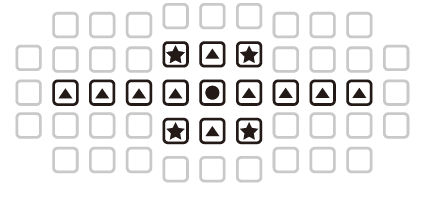 |
Maximum aperture f/8 Focus point selection is supported with 11 points: a cross-type sensor at the center of the display, 4 line sensors on either side, and 1 line sensor above and below. The 4 points shown by symbols are available for dynamic-area AF only, not for group-area AF). |
Sports photographers can benefit by knowing the following autofocus-related Custom Settings.
Custom Setting a1 (AF-C priority selection) controls whether the camera gives priority to focus or shutter release.
 Pictures can be taken whether or not the camera is in focus.
Pictures can be taken whether or not the camera is in focus.
Frame rates do not slow during burst photography.

In burst mode, priority is given to focus for the first frame and to release for later frames. Frame rates do not slow.

In burst mode, priority is given to release for the first frame and to focus for later frames. Frame rates slow as needed to allow camera to focus.

Pictures can only be taken when the camera is in focus.

By preventing the camera from refocusing when your subject is briefly obscured by another object, focus tracking with lock-on ensures that the camera will continue to track the main subject once the obstacle has moved away (continuous-servo AF only). Choose the length of time before the camera refocuses from 5 (Long), 4, 3 (Normal), 2, and 1 (Short). Lock-on applies only while the camera is focusing; to focus at a new distance without waiting for lock-on to end, re-initiate autofocus.
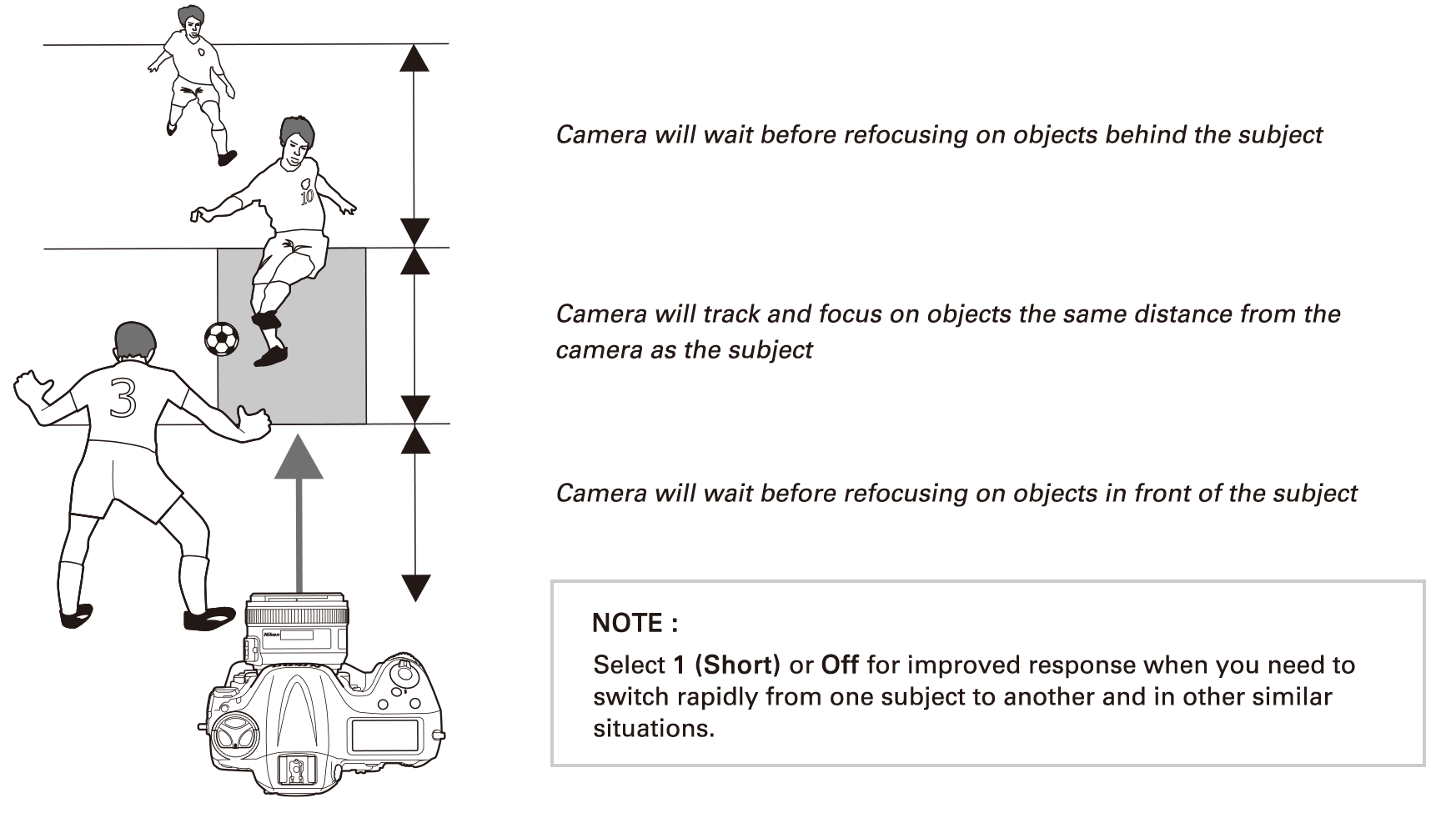
Choose AF-ON only to split the functions of the AF-ON and shutter-release buttons so that the former is used for focus while the latter is used only to release the shutter. Lift your thumb from the AF-ON button to take more shots at the current focus distance or to prevent the camera refocusing when an object passes between you and your subject.
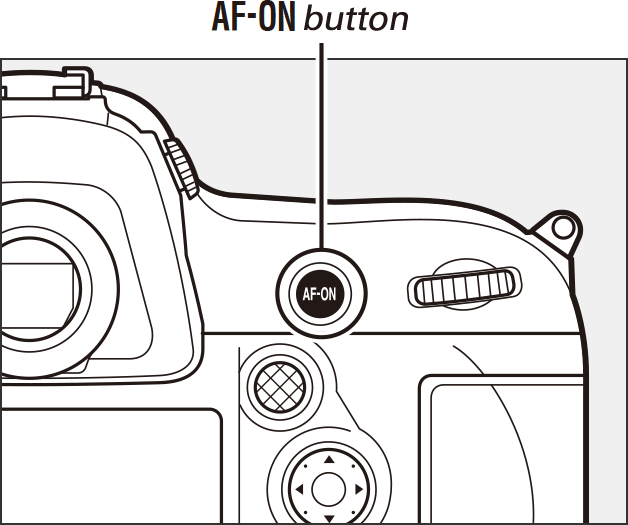
In the AF-ON position, the function selector on some telephoto lenses functions in the same way as the AF-ON button.
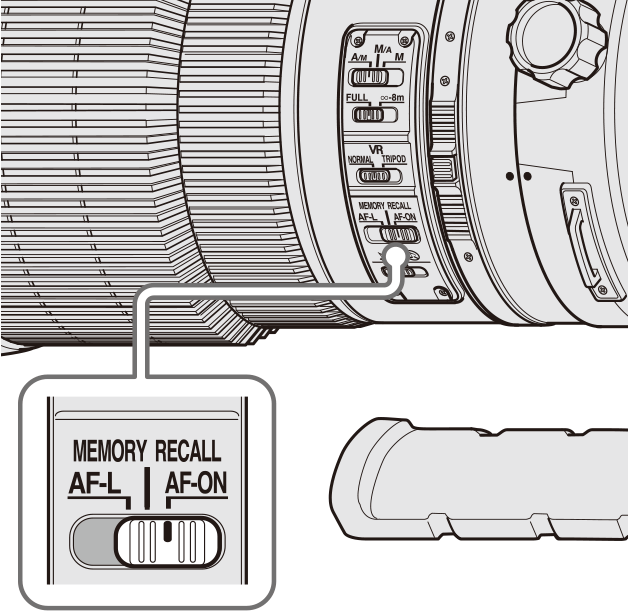
Choose from the following focus-point display options:
Manual focus mode:
Choose On to display the active focus point in manual focus mode, Off to display the focus point only during focus-point selection.
Continuous mode:
Choose On to display the active focus point in CH (continuous high-speed) and CL (continuous low-speed) modes.
Focus point brightness:
Choose the brightness of the focus-point display in the viewfinder from Extra high, High, Normal, and Low.
Dynamic-area AF display:
Choose On to display both the selected focus point and the surrounding focus points in dynamic-area AF mode. When 3D-tracking is used, a dot will be displayed in the center of the focus point ().
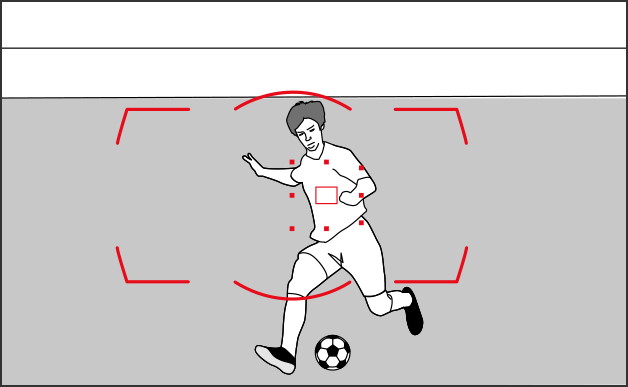
Group-area AF illumination:
Choose how the active focus points are displayed in group-area AF.
Choose if makes the subject difficult to see in the viewfinder.
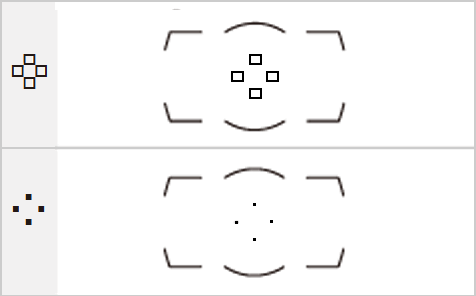
Choose the focus points available for manual focus-point selection.
AF51 (51 points):
Choose from the 51 points shown at right.

AF11 (11 points):
Choose from the 11 points shown at right. Use for quick focus-point selection.

Selecting Focus point and AF-area mode or Focus point lets you to choose the AF-area mode and/or focus point according to whether the camera is in “wide” (landscape orientation), “tall” (portrait) orientation with the camera rotated 90° clockwise, or "tall" orientation with the camera rotated 90° counterclockwise.
| Camera rotated 90° counterclockwise |

|
|---|---|
| Landscape (wide) orientation |

|
| Camera rotated 90° clockwise |

|
If Off is selected, the same focus point and AF-area mode will be used regardless of camera orientation.
| Camera rotated 90° counterclockwise |
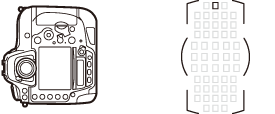 |
|---|---|
| Landscape (wide) orientation |
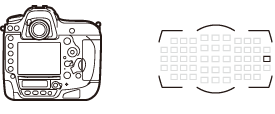 |
| Camera rotated 90° clockwise |
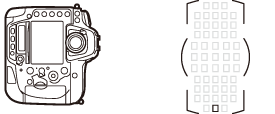 |
If you select Off after choosing Focus point, the camera will select the center focus point for all orientations. If you select Off after choosing Focus point and AF-area mode, the camera will select the center focus point and the AF-area mode chosen for landscape orientation.
View the current AF-area mode in the top control panel, or press the button to view the current focus point and AF-area mode in the monitor.
Choose the AF-area modes that can be selected with the AF-mode button and sub-command dial. For example, you can select Single-point AF and Group-area AF to switch quickly back and forth between these two modes.
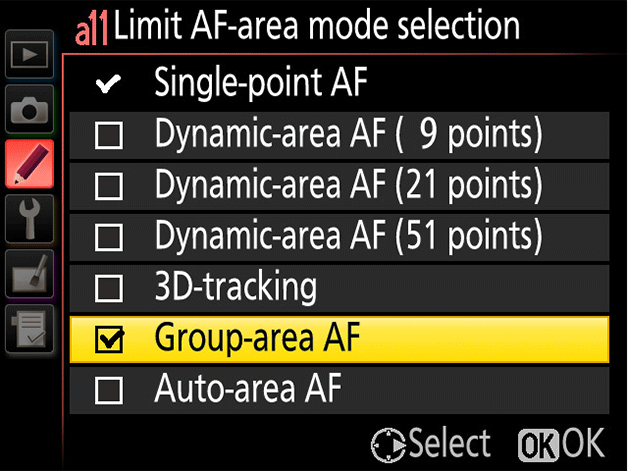
Because group-area AF uses a selected group of 5 focus points and dynamic-area AF a selected focus point combined as necessary with information from surrounding focus points, these modes let you frame your subject in an area larger than a single focus point. This ensures stable, continuous focus that reliably captures even small, fast-moving, and hard-to-frame subjects.
Choose the autofocus modes that can be selected with the AF-mode button and main command dial. For sports photography, you may find it convenient to limit AF-mode selection to AF-C.
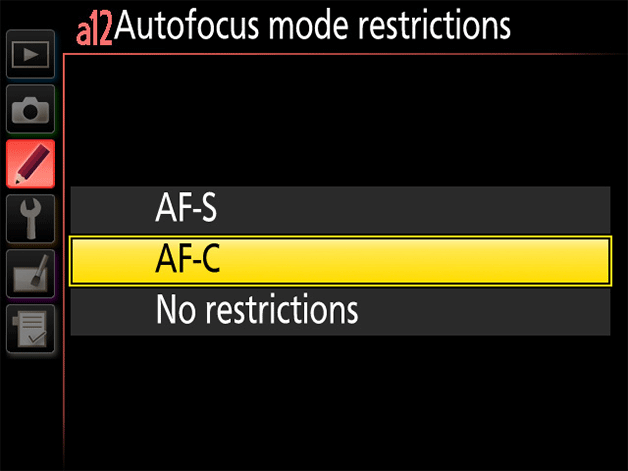
Choosing AF-C disables autofocus mode selection via the AF-mode button and main command dial.
If your lens is equipped with a focus function selector
( ), you can use this option to choose the role played by the focus function buttons when the selector is set to AF-L. For fast-moving sports, choose AF-area mode to enable rapid AF-area mode selection. For examples of how this can be used, see Recommended Settings by Event.
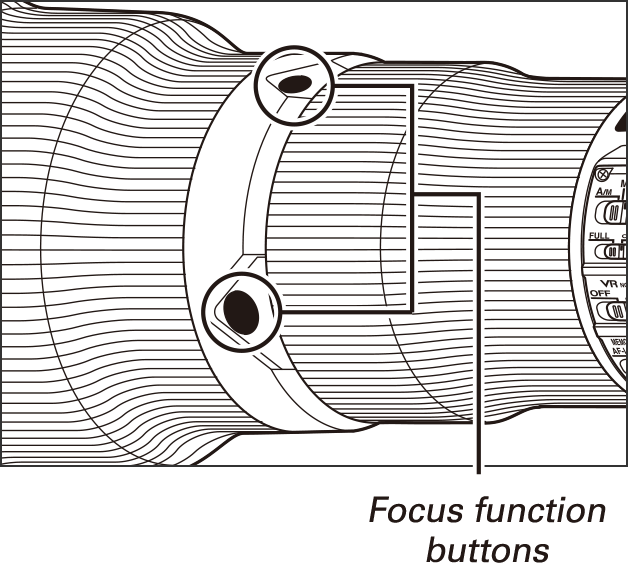
The following lenses feature focus function selectors:
Other Options
Here are the other roles that can be assigned to the focus function buttons:
Remote release can also be assigned to the Fn or Pv button using Custom Setting f3 (Assign Fn button) or f4 (Assign preview button).